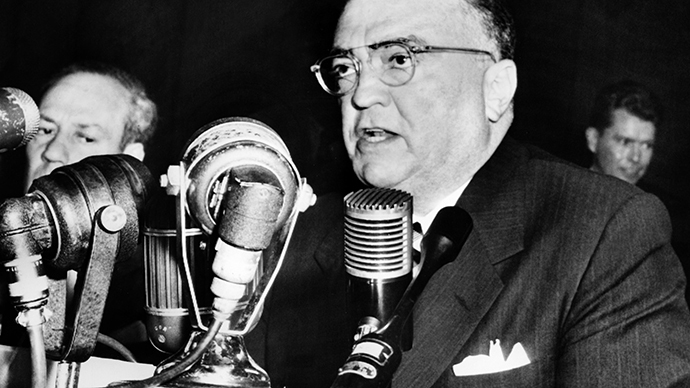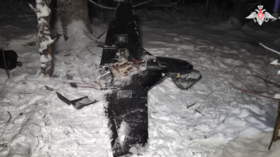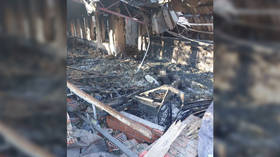Secret FBI project trained Alaskans in preparation for Soviet invasion

Declassified documents reveal that in the 1950s the FBI trained Alaskan residents to become agents behind enemy lines if the Soviets invaded. No women, Eskimo, Indians or Aleuts were included, with native peoples considered unreliable.
The recently declassified FBI and Air Force documents show that in the early stage of the Cold War the US government feared that the Soviet Union was planning an intervention and occupation of Alaska. The US military believed that the Soviet invasion would be airborne, with bombing preceding dropping of paratroopers to Alaska’s major inhabited localities, namely Anchorage, Fairbanks, Nome and Seward.
To cope with the eventuality that there was no way to rebuff the invasion, in 1951 FBI director J. Edgar Hoover initiated a highly classified project, code-named "Washtub," organizing a human intelligence network, recruiting and training citizens across Alaska to provide the American military with intelligence in case of war with Moscow.
Under the plan, "stay-behind agents" would hide in so-called survival caches – bunkers loaded with food, warm clothes, message-coding material and radios – and report on enemy movements.
The covert network consisted of fishermen, bush pilots, trappers and people of other professions. But there were restrictions – no one from the indigenous population was included.
“Eskimo, Indian and Aleut groups in the Territory should be avoided in view of their propensities to drink to excess and their fundamental indifference to constituted governments and political philosophies. It is pointed out that their prime concern is with survival and their allegiance would easily shift to any power in control,” insisted the founders of the program.

After being secretly screened by the FBI for disloyalty – at least some recruits were fingerprinted – the recruited citizens were offered up to $3,000 a year fees (equivalent to $30,000 in today’s money) which was supposed to double “after an invasion has commenced.” However, it is not said in the records how much was actually paid to the recruits.
All participants underwent a range of specialized training such as the parachutes, “guerilla techniques and close fighting,” scouting, patrolling, methods of interview and interrogation, “Arctic survival,” and, also coding and decoding messages. The latter did not always go well, as learning these techniques was “an almost impossible task for backwoodsmen to master in 15 hours of training,” one document said.
“Agents should be trained singly and their identities withheld from each other,” the declassified document reads.
The plan suggested organizing “cells” comprised of a principal, a group of agents the principal recruited, and sub-agents recruited by agents “who are not aware of the identity of the principal.”
A typical candidate to become a principal, OSI suggested, would be “a professional photographer in Anchorage” having only one arm and “it if felt that he would not benefit the enemy in any labor battalion.”“Reasonably intelligent, and particularly crafty,” he would also have amateur radio operator skills and be “licensed as a hunting or fishing guide, and [be] well versed in the art of survival.”
“Women will not be used in any operation contemplated by the proposed plan,” the document reads, giving no further explanations.

Being a recruit for the program was acknowledged as a potentially dangerous mission, since the Soviet military doctrine called for the destruction of local resistance in occupied lands. To make up for the possible casualties, a reserve pool of agents was to be kept outside Alaska and brought in to the region by air.
The program was active from 1951 till 1959 and within that time the OSI trained 89 stay-behind agents, Deborah Kidwell, official historian of the body, wrote in the group’s magazine last year, AP reported. The survival caches served peacetime purposes for many years after the program was shut down.
Initiated by the FBI, the program was later led by the Air Force Office of Special Investigations (OSI), becoming OSI's “most extensive and long-running Cold War projects.” The FBI dubbed the project “STAGE”.
The reason why the FBI opted not to lead the project was that agency’s director, Hoover, worried that in case of an invasion of Alaska the FBI would be “left holding the bag.”
"If a crisis arose we would be in the midst of another 'Pearl Harbor' and get part of the blame," Hoover wrote in the margin of a memo from his aide in September 1951, finally ordering: “Get out at once.”
Parallel to the agent program, the US also worked on training a group of civilian operatives in Alaska whose task would be to organize the evacuation of downed military air crews.














